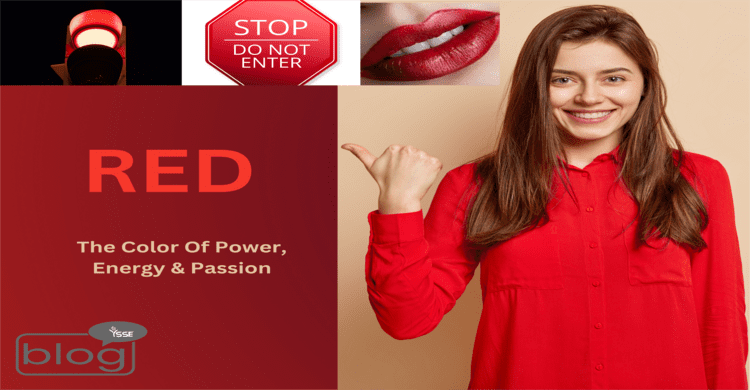Did you know that, after black and white, red is the very first color that people can easily detect? Red is the color that newborns detect before any other color and that momentarily colorblind people after a brain injury start to see red first. Even how colors are defined shows how dominant red is.
Red. The color red draws the most attention and is linked to powerful feelings like love, passion, and rage. It is the color that everyone uses to denote strength, power, bravery, and danger. Red has a strong association with sexuality and heightened appetites. It is lively, provocative, and thrilling.
Red is one of the most visible colors in the spectrum. Red can have a significant impact on our emotions, perceptions, and behavior – according to a recent field of science called “color psychology.”
Physiological Response: Red is a high-energy hue with a relatively long wavelength that stimulates the body’s systems. Cones, specialized receptors in our eyes that are sensitive to various light wavelengths, are stimulated when we sense red. L-cones (long-wavelength cones) are the ones that are most responsive to red light. The first phase of how red light affects our brain is this physiological reaction.
Emotional and Psychological Effects: The visual cortex, as well as areas connected to emotion and memory, process visual stimuli by red color. Being a striking and vivid hue, red frequently elicits strong emotional reactions and mental associations.
Effects of the RED color
Stimulation: It arouses our inner desires, such as those for sex, love, bravery, hatred, or retaliation. Psychologists said if your sex life is lacking passion and you want to revive it, add some red to the bedroom. The more red, the more passion; however, don’t go overboard or it will have the opposite effect.
Excitement and Motivation: It awakens our senses and urges us to act. The red color is used to indicate the lack of time and give us a sense of urgency. Therefore, red is used to stimulate the brain to finish work quickly.
Attention to Danger: It draws your attention and warns you about potential danger. Red is the color that is universally associated with danger, which is why we have red traffic lights, red stop signs, and red color levels to indicate hazards. We also know about the red alert which means the most dangerous situation.
Attraction: Red can easily command attraction. One experiences a strong attraction to someone who wears red dresses. A man loves to see his lover wearing a red dress.
Some experiments have shown that men are relatively more attracted to women dressed in red and girls also use red clothes and lipstick to attract men.
Branding Matter: Red is a color that appears frequently in the logos of strong, well-known companies (such as Netflix and Coca-Cola). Red can appear to be a “power” color due to its link with prosperous businesses.
Historical and Cultural References: Throughout history, red has been used as a symbol of revolution, rebellion, and change. Red flags, for example, have been used to signal defiance and challenge authority.
Some people think that being surrounded by certain colors might cause people to feel certain emotions.
People are thought to be calmed by the color blue, which can make them feel at ease and relaxed. Red, on the other hand, may have the opposite impact by causing people to feel more awake and invigorated. People may have certain associations with the color red, such as Valentine’s Day, which is frequently linked to passion and love.
In conclusion, red has a lot of power. It may create strong feelings, attract attention, stand for many kinds of authority and influence, and even have an impact on how people make decisions. Although its importance varies in situations and cultures, it continually attracts attention and has a big impact on how people think and behave.
For more such blogs check here.
Writer :
Plaban Dey
Intern, Content Writing Department,
YSSE.

